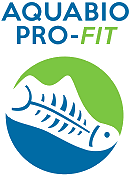Tunicates are a group of sea invertebrates known as the only animals to produce cellulose. The name "tunicates" is derived from their outer covering, which is referred to as a tunic. Ascidians are the major group of tunicates, found mostly on hard surfaces, such as rocks, and include the filter feeding animal Ciona intestinalis.
Anatomically, ascidians are characterized by two main body parts; the outer tunic, which consists of cellulose, protein and ash and whose function is mainly supportive and protective, and the inner body that is covered by the tunic, which includes the vital organs (ovary, heart, stomach, intestine, etc.). These two components can be easily separated from one another, thus facilitating the possibility to valorise each part (grant agreement 790956 AQUABIOPRO-FIT BBI JTI 2017).
Ciona intestinalis is being used by the company Marin Biogas as a renewable source of biomass to produce biogas. The anaerobic fermentation process converts the carbon into biogas, while the residue is a nutritious material high in nitrogen and phosphorus that could be used as a fertilizer for plants. Moreover, the cultivation and harvesting of Ciona helps to remove excess nutrients from the sea, which translates to positive ecological impact by reducing eutrophication.
In recent years, the chemical composition and characteristics of Ciona intestinalis has been investigated in order to explore whether such creatures can be exploited as a bio-source for agriculture, human consumption and renewable energy. Aside from the biogas applications, there are very few examples of the valorisation of ascidians. However, some species are considered a delicious seafood for human consumption in some regions of Asia, Chile and the Mediterranean. Given that the exploitation potential for Ciona intestinalis is relatively unexplored, it is not possible to perform the same market analysis as was conducted for the fish proteins, oils and collagen. In this respect, the following is a description of the possible compounds that can be isolated from Ciona intestinalis for further valorisation.
- Cellulose
Cellulose is one of the most promising compounds that can be isolated from tunicates. In Ciona intestinalis, cellulose represents approximately 60% of the tunic and is chemically identical with plant cellulose. In the tunicates, cellulose is in the form of microfibrils and is associated with other compounds, such as proteins and lipids, that can be easily removed to obtain high-purity cellulose. Such cellulose is promising for high-performance films and packaging polymers, offering an alternative to synthetics polymers with the added advantage that it is biodegradable, nontoxic and suitable for edible packaging. - Fatty acids
Fatty acids are also present in ascidians, with Zhao et al. (2015) having reported the quantity and profile of fatty acids from Ciona intestinalis. The lipids are contained in the inner body tissues of Ciona intestinalis are similar to other marine-based oils, with a high content of the polyunsaturated fatty acids, EPA and DHA. The lipid content typically represents between 1.22 and 6.16% of the inner body, with PUFA representing between 61.11 and 69.77 % of fatty acid content, where EPA and DHA are between 15.20 and 29.27%. While Zhao et al. (2015) mention that other studies have reported significantly lower fatty acid contents in Ciona intestinalis, there is no doubt that these animals are a potential source of such ingredients. - Proteins
Proteins are present in both the tunic and inner body of tunicates in relatively high contents. The inner body is the major source of proteins, containing about 66-73%, in comparison with the tunic, where the protein is between 30 and 50% as a dry-weight ash-free content. The quality of protein is also promising, offering high nutritional and food values due to the content of essential amino acids, which is 66-73% in the case of the inner part and 32- 50% in the tunic.
Given the composition of Ciona intestinalis, possible applications for these compounds include fuel, animal and aquaculture feed, food, pharmaceuticals, biomedical applications, nanocomposites and packaging materials.
Perhaps the greatest barrier to bringing the products from Ciona intestinalis to the market is the fact that there is currently no market. In this respect, these products will have to compete with what is already on the market and may face reluctance from customers to use ingredients from such an untraditional biomass source. Should these ingredients be considered for food applications, another barrier may be the need for novel food approval from EFSA.
On the other hand, the lack of a tunicate product market means that there is every opportunity to disrupt the current market. As mentioned above, tunicates may offer a novel, sustainable, alternative source for valuable ingredients, such as cellulose, proteins and oils, that show similar characteristics to other marine products. If the AQUABIOPRO-FIT projects demonstrate that these compounds can be easily isolated to produce a safe, nutritious product, there should be no reason why these ingredients cannot compete with other marine products.






